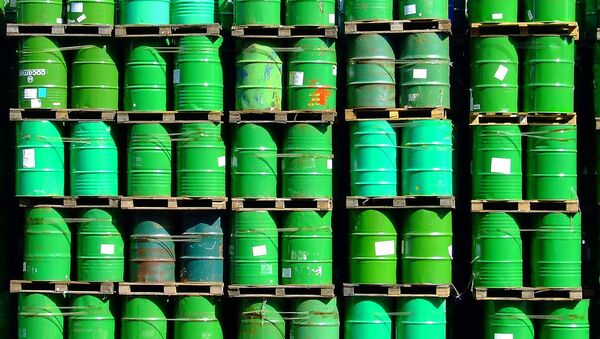Since June 2011, OPEC has increased its output from 890,000 barrels a day, to just over 31 million barrels per day in March. And its expected output could continue to rise.
The price of a barrel of oil averaged $54.6 in February — an increase of $9.68, according to the latest OPEC Monthly Oil Market Report that suggests the rise is prompted by demand from Europe and Asia and amid hope that the price would not go any lower than it had already done.
#OPEC crude #oil production rose by 810,000 barrels per day to 30.7 million barrels per day in March: OPEC pic.twitter.com/1YD7UvpOIY
— zeynep beyza (@zbeyzak91) April 16, 2015
In June 2014, the cost of crude oil on the global market fell to its lowest level in three years to $80 a barrel — in 2011, it was around $125.
Explanations for the drop ranged from a surge in supply from countries including Libya, a decline in demand from oil importing countries and a weaker than expected global economy.
But according to OPEC's latest report, world economic growth is expected to continue to improve this year. Meanwhile "high debt levels in many major economies, a weak labour market in the Euro-zone, and slowing growth levels in emerging economies — with the exception of India — are all keeping global growth below potential for the time being."
#oil on sale! pic.twitter.com/wiLlQQCHaZ
— Reema Harfoushi (@ReemaHarfoushi) April 10, 2015
Peter Kiernan from the Economist Intelligence Unit says oil prices have found their bottom level for now and that's because prices have bottomed. The steep drop since June last year when the price of a barrel was around $45 has basically been stopped.
#OPEC should brace for an increase in #Iran-ian crude output: said the #oil minister http://t.co/36WBV3g3fn @OPECnews pic.twitter.com/70tvzL4W4N
— Iran Front Page (@IranFrontPage) April 11, 2015
However, there are market concerns that stocks are very well supplied, that's why they haven't gone back up to what there were last year, says Kiernan.
"There no clear trajectory up or down. Prices fell as low as they could have done for the time being.
"…As we go into the summer we'll likely see a slowing down of US production growth showing in the figures and an uptake in demand. On the other hand, there is a high level of stocks right now so the market is being pulled both ways."
The United States has been the biggest contributor to oil production growth in the last four years. However according to Peter Kiernan, Saudi Arabia was not prepared to cut back on the amount of oil it produces for fear of losing its leading market share. "Saudi Arabia decided not to act and leave it up to the market to rebalance," said Kiernan.
"There's a good chance the prices will continue to gently rise, especially if the US production growth starts to slow and you have stronger demand numbers that would soak up the surplus we're seeing at the moment."
During President Vladimir Putin's annual discussion with the nation in a Direct Line Q&A session, he was asked about oil prices and the economy. President Putin said that the Russian economy is steadily growing despite sanctions, and that the GPD climbed 0.6%, whilst "oil output reached record highs."


